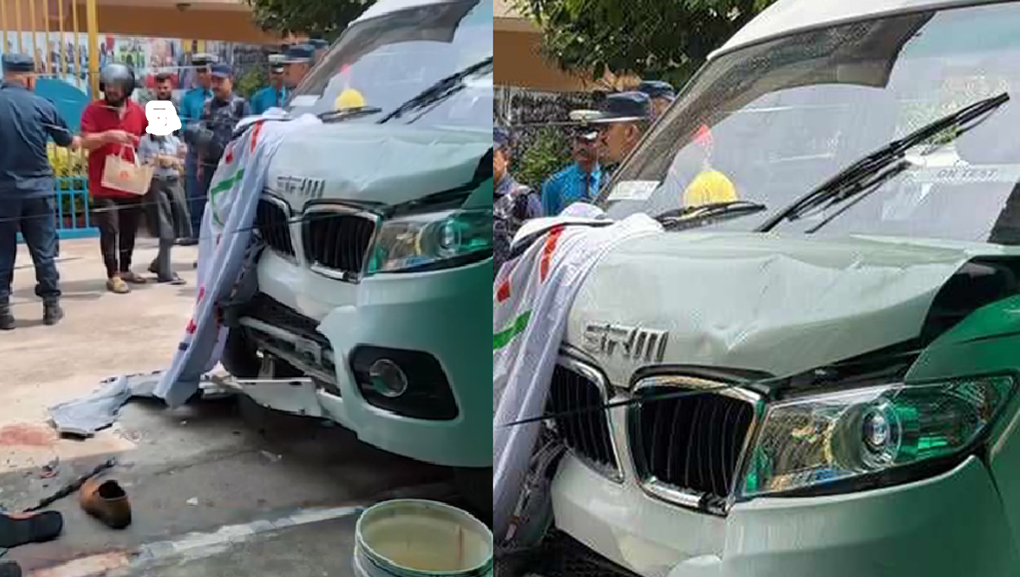Tragedy in Kalanki Sparks Urgent Questions Over EV School Vans and Student Safety

Kathmandu – A devastating accident outside Edify International School in Kalanki has left the nation grieving and questioning the unchecked use of unvetted electric vehicles (EVs) in school transport. On Monday afternoon, a brand-new SRM electric microvan—purchased just four days prior—unexpectedly accelerated and struck several students at the school gate, killing nine-year-old Sonakshi Yadav on the spot and seriously injuring seven others, including school staff.
The incident has not only left families shattered but has also triggered widespread concern over the safety of EV microvans, especially in environments as sensitive as school premises. The van’s driver, Harka Bahadur Karki, reported that the vehicle suddenly lurched forward and failed to respond to steering and braking commands, rendering him unable to stop the van from plowing into the children.
The SRM brand, distributed in Nepal by VG Motors, had gained popularity among school administrations for its modern design and competitive pricing. However, this tragic event has spotlighted recurring complaints about the vehicle’s reliability, ranging from steering lock-ups and brake failure to abrupt acceleration—all of which have been shared by users across Nepal in recent months. Despite this, the manufacturer has continued to dismiss these issues as user error, deepening concerns over its accountability and commitment to safety.
Nepal’s rising enthusiasm for electric vehicles—driven by environmental goals and fuel cost reductions has led to their rapid adoption, including by educational institutions. However, critics argue that this transition has outpaced the country’s regulatory readiness. No separate safety standard or certification process currently exists to assess whether such vehicles are suitable for transporting schoolchildren.

Stakeholders are now calling for an urgent review of school transportation standards. Many believe the tragedy could have been avoided if school authorities had thoroughly vetted the vehicle’s safety credentials or if the government had in place clear guidelines for EV use in child-sensitive zones. Questions have also been raised about the Ministry of Education, Department of Transport Management, and Department of Quality Control—none of which have implemented mandatory testing procedures for school-use EVs.
Beyond technological flaws, this incident exposes a deeper crisis of negligence. Despite charging premium fees, some private schools are opting for low-cost vehicles with unproven technology, endangering student lives in the process.
Parents, education professionals, and safety advocates now demand decisive action. A comprehensive set of safety protocols, tailored specifically for school transportation vehicles, especially electric ones, must be developed. Testing requirements, usage guidelines, and quality assurance protocols need to be introduced without delay.
What happened in Kalanki was more than a mechanical failure. It was a preventable tragedy, and it must serve as a wake-up call. The road to modernization cannot be paved with broken systems and certainly not at the cost of young lives.
